#early america
Photo


“An Accurate Map of the United States of America, with Part of the Surrounding Provinces agreeable to the Treaty of Peace of 1783,” published August 6, 1783.
(You can zoom really far in in our catalog!)
Record Group 76: Records of Boundary and Claims Commissions and Arbitrations
Series: Maps Related to the Northeastern Boundary of the United States
Image description: A map of the U.S. as of 1783, with states, towns, waterways, and tribal lands labeled. Judging by the shape of Michigan, the map is not entirely accurate.
Image description: Zoomed-in portion of the map centered on Philadelphia, showing parts of New Jersey, Pennsylvania, Delaware, and Maryland. All of the little beaches and islands along the eastern shore of New Jersey are labeled.
107 notes
·
View notes
Text
“…it is worth while from time to time to take a look backward, and to consider what those endured who went before us. To most of us our own life is almost the only struggle worth considering, and wrapped up in our personal affairs, we do not remember the stupendous difficulties faced by our forebears, who conquered this country and made possible its development, and the ease and luxury in which we to-day have a part.”
Excerpt from Beyond the Old Frontier ~ written by George Bird Grinnell [originally published – 1913]
#George Bird Grinnell#frontier life#old west#early america#frontiersman#great quote#forebears#those who came before us#classic books#historical narrative#american history#pioneers#frontier#great authors
47 notes
·
View notes
Note
The books on your TBR sound interesting! I've heard of Redcoat, but what are the other two books about? I've never heard of those!
Hi, Anon! Thank you for the ask!
David Liss’ The Whiskey Rebels is centered on the build up to the Whiskey Rebellion of 1794, and follows two individuals—Ethan Saunders and Joan Maycott—who eventually find themselves on opposite sides of the conflict. Saunders working with his old enemy, Treasury Secretary Alexander Hamilton, and Maycott and her family living on the Western frontier distilling whiskey.
I particularly find this interesting due to the fact that Hamilton is painted as a villain (something not too difficult to do), and the dual storylines that eventually connect at the end. I’m very curious and am hoping to get to this novel soon.
Salina B. Baker’s The Line of Splendor tells the story of General Nathaniel Greene in the form of a biographical novel. Sort of similar to what I’m doing with The American Icarus and Alexander Hamilton. Greene was one of Washington’s top generals during the American Revolution, and Baker utilized real documents and other materials to tell his story from his early involvement in the war to his later years.
I was particularly interested in this novel due to the fact that it centered on a very important, but overlooked, historical figure, and was made in an interesting manner.
#thanks anon#thanks for the ask!#amrev#alexander hamilton#nathaniel greene#the whiskey rebels#the line of splendor#historical fiction#historical novels#early america
6 notes
·
View notes
Text

Fort Ouiatenon
French fur trader fort replica. West Lafayette, IN.
3 notes
·
View notes
Text
Whales of the Great Salt Lake
(TW animal death, animal cruelty, thalassophobia)

[Image ID: A black and white stylized whale image. The whale is breaching the surface of the sea and is blowing a spout of water into the air. Its tail is coming out of the water in the background.]
Hey y’all welcome back to another cryptid post. The cryptid energy of this creature doesn’t come so much from the creature itself, but it’s location, the Great Salt Lake.
As the leftover dregs of the massive prehistoric saltwater Lake Bonneville which drained about 15,000 years ago, Utah’s Great Salt Lake is a natural wonder.
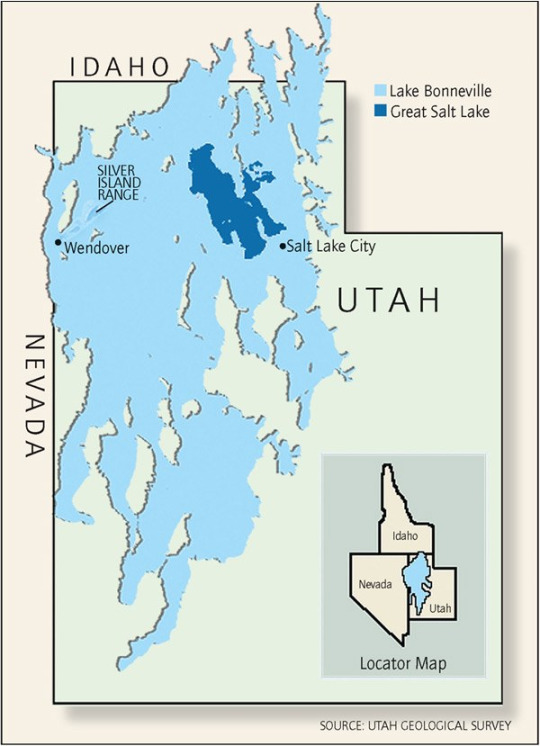
[Image ID: a map of the former Lake Bonneville laid over the state of Utah and spreading into Nevada and Idaho, and about half the size of the state of Utah. It covers the area of the Great Salt Lake, only a fraction of the size in comparison.]
With a salinity six times that of the ocean, the Great Salt Lake is a death trap for anything other than bacteria, a couple algaes, and brine shrimp, aquatic invertebrates the size of a pencil eraser. A few freshwater streams flow into the lake, providing lagoons for select fish and shorebird species, but the lake itself its mostly inhospitable.
This makes the claim that several Australian whales, (known to exceed 50ft in length,) are alive and well in the Great Salt Lake, (about 42 feet at it’s deepest,) pretty hard to believe.
As a Utah resident myself, I’ve always had a soft spot for these whales. We’ve all had an uncle or neighbor spend a night out on the lake looking for them, and occasionally sightings of them still get published on blogs and Facebook posts. They of course never existed in the first place, but it’s still a fun story.
It began way back in 1890, when a local paper called the Utah Enquirer began documenting the efforts of one James Wickham to provide the budding economy of the newly settled Salt Lake Valley both with a novelty tourist attraction, and a cash crop of whale meat and oil. As whales are extremophiles, known to thrive under immense water pressure and in freezing temperatures, James believed the incredibly salty Great Salt Lake to be no match for them. The Utah Enquirer claimed that James began his project back in 1875, but records of this initiation could not be found.
The June 24th, 1890 article goes as follows.
“Intelligent newspaper readers have not forgotten the inauguration 15 years ago by Mr. James Wickham, a scientific English gentleman of the whale industry in the Great Salt Lake. As considerable time was required for the development of the experiment, the subject has passed out of the public mind but it has by no means been forgotten by naturalist or capitalists interested in the whale fishery.
The whale is the largest and probably the longest lived animal. They have been known to grow 100 ft in length and live to the age of 400 years. It is a mammal, or, in other words, suckles it's young. The project of Mr. Wickham was greatly assisted by this fact, for the difficulty that would attend the obtaining of whale eggs in the deep seas is at once apparent. It was only necessary to obtain a pair of whales in order to begin the propagation of animals under domestication. The southern or Australian whale was selected as the best suited to the Great Salt Lake. The greater part of two years were occupied off the coast of Australia by a vessel sent especially for the purpose and continued efforts to capture the young whales without injury. The feet, however, was at least accomplished, and the beasts, each about 35 ft long, were shipped to San Francisco in 1873 in tanks built expressly for them. 50 tanks of seawater accomplished their overland shipment to ensure plentiful supplies of the natural element.
Mr. Wickham came from London in person to superintend the "planting" of his Leviathan pets. He selected a small bay near the mouth of the Bear River connected with the main water by a shallow straight half a mile wide. Across this strait he built a wire fence, and inside the pen so formed he turned the whales loose. After a few minutes inactivity they disported themselves in a lively manner, spouting water as in mid-ocean, but as if taking in by instinct or intention the cramped character of their new home, they suddenly made a beeline for deep water and shot through the wire fence as if it had been made of threads. In twenty minutes they were out of sight, and the chagrined Mr. Wickham stood gazing helplessly at the big salt water.
If the Great Salt Lake were in Asia it would have been called a sea. It is 75 miles long and from 30 to 40 wide, so it is easy to perceive how readily the whales could vanish from sight. Though the enterprising owner was of course, disappointed and doubtful of results he left an agent behind him to look after his floating property.
Six months later Mr. Wickham's representative came upon the whales 15 miles from the bay where they had broken away, and from that time to the present they have been observed in intervals by him and the watermen who [sic]ply the lake spouting and playing.
Within the last few days, however, Mr. Wickham cabled directions to make careful inspection and report the developments, and the agent followed the whales for five successive days and nights. Discovering that the original pair are now 60 ft in length, and followed about by school of several hundred young, varying in length from 3 to 15 ft. The scheme is a surprising and complete success, and Mr. Wickham has earned the thanks of mankind.
Catching whales in the Great Salt Lake and following that business on the dangerous Greenland Coast are two different things. The enormous value of the new industry can be better appropriated by remembering that a single whale produces 20 tons of pure oil."
Article can be found here

[Image ID: A black and white photo of a modified train car. A large window on the side shows a young whale floating inside the train. There is a building behind the train on the left side, and some trees on the right.]
Claims that whales live up to 400 years and also lay eggs notwithstanding, the legend sparked to life again in the twenty-first century with the appearance of the image above. This photo depicts one of the whales in its train car bound for Salt Lake City. I’d love to believe the photographic evidence as much as anybody, but unfortunately this image was debunked in 2019 by the Utah news outlet Deseret News, who tracked down the creators. They revealed in an interview that this image was used to promote their business of preserving old photos.
Further investigation by Deseret News revealed that there never was any Mr. James Wickham or his crew of biologists, no record of them anywhere other than the Utah Enquirer.
And in a final blow to the story’s credibility, the Utah Enquirer published a denouncement on July 22, 1890, about a month after the original story ran, saying “It would be impossible for any whale to exist in the waters of the Great Salt Lake.”
Full text here
Despite the fact that whales do not and cannot exist in the Great Salt Lake, sightings continue to crop up. The most famous instance of this continued phenomenon happened almost a decade ago, when a twelve-foot humpback whale reportedly appeared in a field in Farmington Utah, about ten miles from the Great Salt Lake.
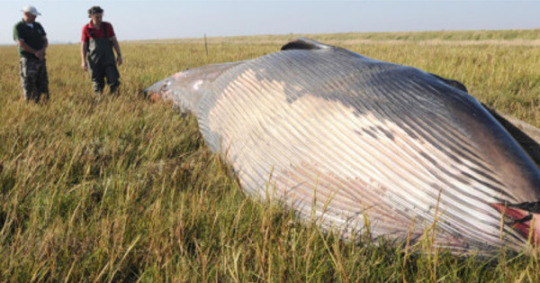
[Image ID: A dead whale lying on its side in a grassy field. Two men in the top left look down at it.]
Inconsistency in whale species aside, the image above brought a renewed fascination and belief in the Whales of the Great Salt Lake, (one I admittedly got caught up in,) before being debunked again by Deseret News in late 2015.
The Great Salt Lake, like most places in the world, is full of oddities and legends both real and made up. The lake boasts tales of pterodactyl sightings and mosquitos the size of helicopters. A troup of animals that escaped their traveling circus and were left to wander the desert. A creature with the head of an alligator and the body of a horse that charges at campers, and Pink Floyd, the flamingo that escaped Salt Lake City’s Tracy Aviary and spent a few seasons on the lake hanging out with swans and seagulls.

[Image ID: A flock of birds on the Great Salt Lake, both in flight and on the water. Most are black and white California Gulls, but there is one pink flamingo flying in the right center of the image. Mountains are visible in the background.]
(You guys should look up the story of Pink Floyd the flamingo it’s pretty great.)
Lake Bonneville is theorized to have been a thousand feet deep, and to have drained into the Pacific Ocean. Fossil evidence suggests that sea life would migrate up the channels and swim above what is now desert and mesa and scrubland, and maybe even down in what would become the Great Salt Lake 15,000 years later. Maybe whales joined them. Maybe, for a brief moment in time, Utah had whales.
But, if that ever was the case, those whales are long dead by now. It is with a heavy heart I must conclude that there are no whales in the Great Salt Lake. Even so, it’ll always be my favorite local legend <3
Source
Source
#Great Salt Lake#Cryptid#Legend#Salt Lake City#Whales in the Great Salt Lake#Whale#Southern Right Whale#Australian Whale#Humpback Whale#Early America#Local Legend#Utah Enquirer#Deseret News#Thalassophobia#Animal Death#Animal Abuse#please don't ship whales in tiny train cars across the united states#Flamingo#Pink Floyd the Flamingo#Seagull#Salt Lake Valley#Lake Bonneville#Salt Lake Cryptid#Utah Cryptid#Paleontology#Long Post#Also this is a sequel to my Crawfordsville Monster post I want to make a series I think
12 notes
·
View notes
Text
Ben Franklin's American Instructor textbook included an abortion recipe.
#benjamin franklin#history#early America#math textbook#abortion#slate magazine#this makes me so mad that we have assholes on the supreme court#that apparently plan on removing anything not expressly stated in the constitution#but of course only the things they don't like
4 notes
·
View notes
Text

Apsaroke Spirit
#art#artwork#digital art#digital painting#earthlingartwork#artists on tumblr#original art#abstract#painting#my art#my artwrok#native american#original work#crow#Apsaroke#american#early america#horseback#Montana#pop art#folk art#abstract art#mixed style#unique#americana#earth#spirit of the west#past#history
1 note
·
View note
Text


0 notes
Text



Map of the United States, April 3, 1783.
Record Group 76: Records of Boundary and Claims Commissions and Arbitrations
Series: Maps Related to the Northeastern Boundary of the United States
Image description: Map of the U.S. as of 1783, with states, geographical features, and Native American tribal territories labeled. Everything west of the Mississippi is just “Louisiana,” and some of the spellings are a bit off, like “Pensilvania.”
Image description: Zoomed-in portion of the map, showing how the cartographers hadn’t quite figured out the shape of Michigan yet.
Image description: Zoomed-in portion of the map, showing the Carolinas, Georgia reaching all the way to the Mississippi River, and East Florida/West Florida, which is not yet part of the U.S.
137 notes
·
View notes
Text
Watch "German and Irish Immigration | US History to 1865 | Study Hall" on YouTube
youtube
#immigration#push and pull#us history#world history#potato famine#early America#germany#ireland#geography#Youtube
1 note
·
View note
Text
Need Some Timeline Help
So since planning out what portions of Hamilton’s life each volume of The American Icarus will cover, I’ve come to realize that while there are dozens of timelines both sparse and detailed covering the American Revolution and Alexander Hamilton’s role in it that have helped me immensely in the outlining process, I haven’t found any timelines with as much detail covering his life once he left the war after Yorktown. Making the outlining process for the rest of the series seem much harder for the level of day-by-day detail that I’d like to have as a reference.
So I’ve decided to start making one myself:
However, if anyone is willing, I could use some help. Ideally I want to go all the way until Hamilton’s death, however doing this by myself will take a long time. The link above will take you to the timeline table I’ve created thus far, and you’re welcome to add to it. For this, I’ve referenced Founders Online but plan to look at other places (such as Madison’s Journals of the Constitutional Convention, Jefferson’s Anas, Maclay’s journals during his term in the Senate, etc) the further I go along. I also figured making this could help someone else out and not just me so here you go.
#alexander hamilton#amrev#american history#historical alexander hamilton#historical timelines#timelines#american founding#founders archives#signal boost#18th century history#18th century#early america#history#history tumblr
14 notes
·
View notes
Text
Favorite DISNEY STUDIOS Live Action Movies

Below is a list of my favorite live-action movies from the Walt Disney Studios. This list is in chronological order:
FAVORITE DISNEY STUDIOS LIVE ACTION MOVIES

“Treasure Island (1950) - This adaptation of Robert Louis Stevenson’s 1883 adventure novel starred Robert Newton and Bobby Driscoll. Byron Haskin directed.
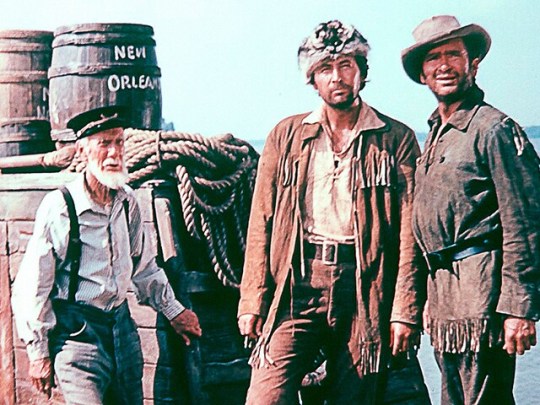
“Davy Crockett and the River Pirates” (1956) - Fess Parker and Buddy Ebsen starred in this prequel to the 1955 movie, “Davy Crockett, King of the Wild Frontier”. Norman Foster directed.
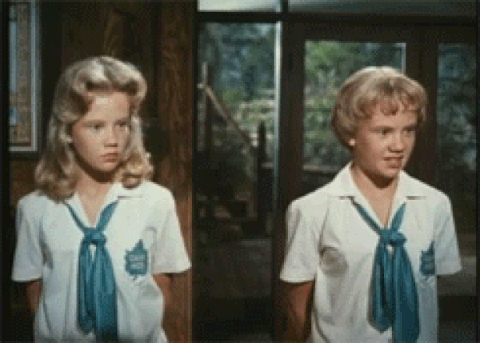
“The Parent Trap (1961) - Hayley Mills starred in this first version of Disney’s film about long-lost twins who scheme to reconcile their divorced parents. Co-starring Maureen O’Hara and Brian Keith, the movie was written and directed by David Swift.
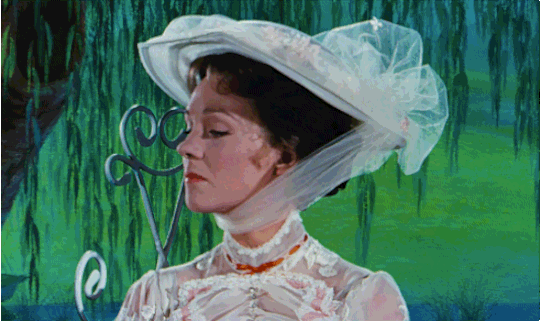
“Mary Poppins” (1964) - Oscar winner Julie Andrews and Dick Van Dyke starred in this award-winning musical adaptation of P.L. Travers series of novellas about a magical British nanny. Robert Stevenson directed.

“That Darn Cat” (1965) - Hayley Mills and Dean Jones starred in this comedic adaptation of Gordon and Mildred Gordon’s 1963 novel, “Undercover Cat”. Robert Stevenson directed.

“The Adventures of Bullwhip Griffin” (1967) - Roddy McDowall, Suzanne Pleshette and Bryan Russell starred in this adaptation of Lowell S. Hawley‘s 1963 novel, “By the Great Horn Spoon!“. James Neilson directed.

“Blackbeard’s Ghost” (1968) - Peter Ustinov, Dean Jones and Suzanne Pleshette starred in this comedy adaptation of Ben Stahl’s 1965 novel. Robert Stevenson directed.
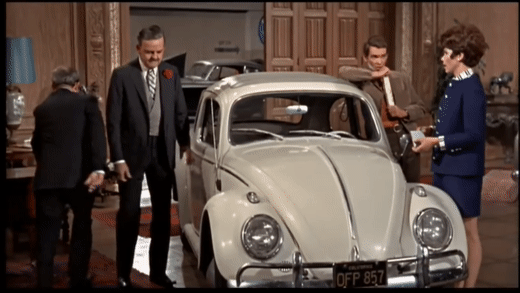
“The Love Bug” (1968-69) - Dean Jones, Michele Lee, David Tomlinson and Buddy Hackett starred in an adaptation of “Car, Boy, Girl", Gordon Buford’s story about a magical Volkswagen. Robert Stevenson directed.

“Bedknobs and Broomsticks” (1971) - Angela Landsbury and David Tomlinson starred in this musical adaptation of Mary Norton’s children books, 1944′s “The Magic Bedknob; or, How to Become a Witch in Ten Easy Lessons” and 1947′s “Bonfires and Broomsticks”. Robert Stevenson directed.
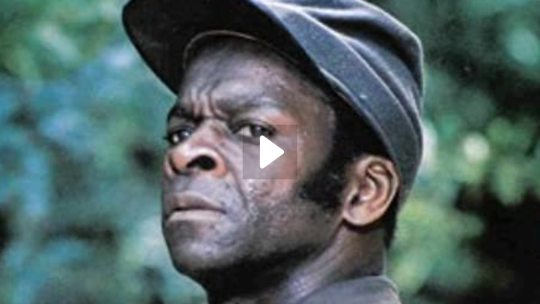
“The Million Dollar Dixie Deliverance” (1978) - Brock Peters starred in this Civil War adventure about a black Union soldier and escaped prisoner of war, who helps five wealthy Northern children being held hostage from Confederate soldiers escape from their captors. Russ Mayberry directed.

“Dick Tracy” (1990) - Warren Beatty directed and starred in this adaptation of the 1930s comic strip created by Chester Gould. Oscar nominee Al Pacino, Glenne Headly and Madonna co-starred.

“The Rocketeer” (1991) - Bill Campbell starred in this adaptation of the superhero comic book series created by Dave Stevens. Directed by Joe Johnston, the movie co-starred Jennifer Connelly, Timothy Dalton and Alan Arkin.
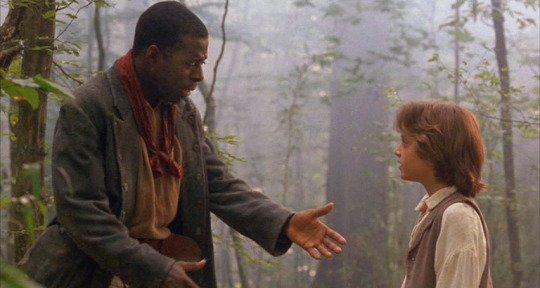
“The Adventures of Huck Finn” (1993) - Elijah Wood and Courtney B. Vance starred in this adaptation of Mark Twain’s 1884 novel, “Adventures of Huckleberry Finn”. The movie was written and directed by Stephen Sommers.
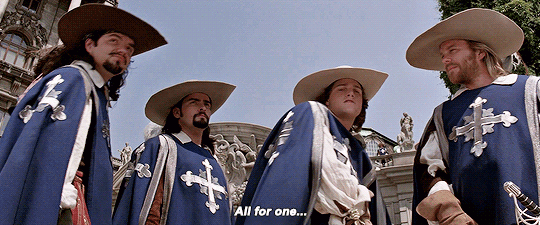
“The Three Musketeers” (1993) - Kiefer Sutherland, Chris O’Donnell, Charlie Sheen and Oliver Platt starred in this loose adaptation of Alexandre Dumas père‘s 1844 novel. Stephen Herek directed.

“Pirates of the Caribbean: The Curse of the Black Pearl” (2003) - Johnny Depp starred in the first film of the supernatural swashbuckler film series that was based on a Disney Park attraction. Directed by Gore Verbinski, the movie co-starred Orlando Bloom, Keira Knightley and Geoffrey Rush.

“National Treasure” (2004) - Nicholas Cage starred in the first adventure movie in this film series about a historian and treasure hunter. Directed by Jon Turtelbaub, the movie co-starred Justin Bartha, Diane Kruger, Sean Bean and Jon Voight.

“Pirates of the Caribbean: Dead Man’s Chest” (2006) - Johnny Depp starred in the second movie of the supernatural swashbuckler film series that was based on the Disney Park attraction. Directed by Gore Verbinski, the movie co-starred Orlando Bloom, Keira Knightley and Bill Nighy.

“National Treasure 2: Book of Secrets” (2007) - Nicholas Cage starred in the second adventure movie in this film series about a historian and treasure hunter. Directed by Jon Turtelbaub, the movie co-starred Justin Bartha, Diane Kruger, Jon Voight, Ed Harris and Helen Mirren.

“Prince of Persia: The Sands of Time” (2010) - Jake Gyllenhaal, Gemma Arterton and Ben Kingsley starred in this action-adventure adaptation of Jordan Mechner’s video game series. Mike Newell directed.
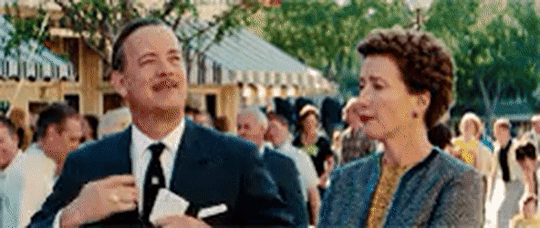
“Saving Mr. Banks” (2013) - Emma Thompson and Tom Hanks starred in this biopic about conflict between author P.L. Travers and filmmaker Walt Disney over the development of the 1964 movie, “Mary Poppins”. John Lee Hancock directed.

“Tomorrowland” (2015) - George Clooney, Britt Robertson and Hugh Laurie starred in science-fiction adventure about a disillusioned scientist and a teenage science enthusiast embarking on a trip to a futuristic alternate dimension. Brad Bird directed and co-wrote with Damon Lindelof.

“Cruella” (2021) - Emma Stone starred as the titular character in this crime comedy about the villainess from Dodie Smith's 1956 novel The Hundred and One Dalmatians”. Directed by Craig Gillespie, the movie co-starred Emma Thompson, Joel Fry and Paul Walter Hauser.
Do you have any favorite Disney live-action movies? What are they?

#walt disney studios#disney studios#disney live action#disney live action films#treasure island#treasure island 1950#robert newton#bobby driscoll#robert stevenson#davy crockett#early america#davy crockett and the river pirates#fess parker#buddy ebsen#norman foster#the parent trap#the parent trap 1961#hayley mills#brian keith#maureen o'hara#david swift#mary poppins#p.l. travers#mary poppins 1964#julie andrews#dick van dyke#edwardian age#that darn cat 1965#dean jones#the adventures of bullwhip griffin
1 note
·
View note
Text
Below is practically a written script that I am using as the basis for today’s livestream, Day 4 of the non-credit American Literature I survey course, going live at 11 AM EDT today.
Today’s livestream is about one of the first popular short stories published in the United States. This text is supposed to be a satire about how little changes even over generations, even after an American Revolution–but is probably more well known today as shorthand for “old people who sleep through things.” Today we discuss Washington Irving’s “Rip Van Winkle.” Read along for free and legally.
And feel free to read along with the script below, and leave a comment or email me to join the discussion!
A YouTube recording is included below.
youtube
Introductions
Okay, let’s get started: it’s 11 AM EDT on Thursday, September 22, 2022. This is a livestream for Day 4 of the American Literature I survey, a non-credit pseudo-class hosted on YouTube and Twitch that looks at United States literature from before 1865.
I’m Derek S. McGrath, my pronouns are he/him/his. I’m not on camera right now–if I was, you would see a white man with glasses and brown hair. I’m opting to instead use a slideshow presentation–while most of what I have to say is already on the slide, there are some details from the slides that I will read aloud.
For example, this slide features the statue "Rip Van Winkle Returned," designed in 1871, cast in 1871 or after, by John Rogers. This image is in the public domain courtesy of the Metropolitan Museum of Art-you can find it in their online collection, metmuseum.org/art/collection/search/11941.
Last Time
Last time, on Tuesday, we introduced the question that guides the rest of this semester: who reads American literature? The person who posed that question was nineteenth-century British author Sydney Smith.
Today
And today we talk about one of the few American authors that Smith thought anyone would read: Washington Irving. Today’s livestream is about one of the first popular short stories published in the United States. This text is supposed to be a satire about how little changes even over generations, even after an American Revolution–but is probably more well known today as shorthand for “old people who sleep through things.” Today we discuss Washington Irving’s “Rip Van Winkle.” Read along for free and legally.
Housekeeping
But before we get started, I wanted to very briefly touch three bits of housekeeping.
American Fragments
On Tuesday I had promoted the American Antiquarian Society’s seminar with Professor Daniel Diez Couch about his recent book American Fragments. I had complimented the seminar for showing how, especially in this kind of class, you want your seminar papers to not only be about the content of the text but also its form. In other words, look at how Professor Couch writes. He took the fragment–a form of writing, in which you have an incomplete story, almost like you ripped a page out of a journal, or saw scribblings on a slip of paper–and connected that to the topics covered in that writing, including people traumatized, people with amputations from war and injuries, and a nation divided–in other words, the content is itself about people, societies, and ideas that are also all fragmented. In all of your writing, try to show how the choices made in the form of the writing enhance or contradict the message. This is something I try to do when I do live-reactions to new comics coming out of Japan–shameless plug, you can hear my live reactions Sunday mornings at 11 AM EDT on YouTube and Twitch. But this is about Professor Couch, not me–and you can watch his informative, engaging seminar on YouTube right now, the link is in the video description.
The New College Classroom
In other news, a few weeks ago, I watched a live online seminar about the new book The New College Classroom, featuring the authors Cathy Davidson and Christina Katopodis. This talk gave me a lot of ideas that ended up guiding the structure to this livestream, including how I introduce discussion questions and keep bringing back discussions to how we apply literature to understanding identity and politics in this current moment.
A video recording of the seminar along with slides is available now on the Futures Initiatives web site. If you are teaching pre-1865 United States literature, pay attention to Professor Katopodis’s exercise that she demonstrates for teaching about privilege, by way of having students stand up, then sit down if they don’t match one of the racial, gendered, and class-based assessments who got to be considered American during the founding of the United States.
Questions for Today’s Class
With housekeeping out of the way, let’s jump into Washington Irving!
Last time, I left you with these three questions to guide today’s discussion. Let’s review those questions:
In which ways do past people or events in “Rip Van Winkle” re-emerge in the present? In other words, which moments of something repeating pop up in the story, such as names, events, or phrases?
In which ways do you see this story as perpetuating sexism, especially in the portrayal of Rip Van Winkle’s wife? And do you see ways in which this story actually undermines sexism?
Washington Irving wrote “Rip Van Winkle” as a very complicated set of “frame narratives”--a literary art form we’ll talk more about on Thursday. “Rip Van Winkle” is written by Washington Irving, pretending to be someone named Geoffrey Crayon, who he pretends found the writings of a fictional historian named Diedrich Knickerbocker, and it was Knickerbocker who found this supposedly real story about a supposedly real guy named Rip Van Winkle. Why do you think Irving was so interested in making up fake people like Crayon and Knickerbocker to tell this story, instead of just telling it himself? And what are some of the details we learn about Crayon and Knickerbocker’s personality? Is there anything we learn about Crayon and Knickerbocker that helps us believe that this fictional story is actually real New York history? Or are there clues by Irving that we should think Crayon and Knickerbocker are some real fools who are deceived and falling for other people’s tricks?
How to Teach Irving and Why?
Why is Washington Irving so important to include early on in your American Literature I class?
First Financially Self-supporting Author from the US
For starters, Irving was one of the few authors that Sydney Smith deigned to mention when we read Smith’s “Who Reads an American Book?” for Tuesday’s livestream. And there is a good reason Smith referred to Irving: he was one of the first, if not the first, American authors to support themselves financially with only their writing. Maybe we can touch upon this in later classes, but near-contemporaries of Irving, such as Herman Melville and Nathaniel Hawthorne, were working in governmental jobs as bureaucrats, authors such as Edgar Allan Poe faced ever approaching poverty and were earning money more from editing journals than their own writing, and other authors such as Frederick Douglass were as much activists and public speakers as they were authors.
(Notice I am not mentioning enough authors here who were women: that is my oversight, and I apologize for the exclusion. In the case of many authors who are women, they were also editors like Poe, public speakers and activists like Douglass, and, as we will see when we get to Anne Bradstreet and Phillis Wheatley, so much of early American writing by women had to be a repeated insistence on their relationship to the family and the home. We’ll talk about this when we get to Bradstreet, but her writing was built on a framing mechanism in which she had to insist, “Hey, yeah, I’m writing right now, and you’re reading my writing right now, but please believe when I say that I am writing all of this at night only after I put my kids to sleep, so really I’m not sacrificing time with my family and my obligations to them to write this, I’m actually sacrificing my sleeping hours to do this. And look, I have this preface from this man in my community who backs up my claim, where he insists I was writing at night so that you don’t think I’m not being an idealized representations of what we think women should do in the house.”)
Visual Literacy
But how do you need to teach Irving? I’ve talked around this, but one problem with trying to teach “Rip Van Winkle” is that, in our popular imagination, it’s not seen as a complex short story: it’s seen one of America’s first fairy tales. And it’s not even an original fairy tale: I’ll skip past all the previous European and Biblical inspirations for the story, because they tend to just be “person sleeps for a long time,” and when you get to a lot of myths, eventually you’re going to find similar myths pop up in different cultures and societies that had zero way of having taken from each other.
I find that getting past that “it’s a fairy tale” mindset requires appealing to a skill set many of our students already have: critical assessment of visual culture.
I had discussed last week the challenge of making audio-based exercises more accessible to audiences with hearing impairments. I do not want to pretend that making visual exercises more accessible to visually impaired audiences is easier–but I will say I am more familiar with that kind of course design.
We’ll get to this later when answering the repetition of the past, but one key moment in “Rip Van Winkle” is when, before his 20-year nap, Rip used to go to the King George III tavern, and after waiting up, after the American Revolution, when England was kicked out of the colonies, this tavern, out of a cynical search for the almighty dollar, just repainted the George III sign to turn him into George Washington. This detail can go over students’ heads–so, why not turn this into a lesson in visual literacy, and ask students to specify whether it is really that easy to alter an image of George III into an image of George Washington.
Let’s compare these two famous illustrations of the two Georges.
Obviously these are two illustrated, rather than photographic, representations of the two Georges, so we’re not getting to accuracy in what they really looked like.
(If I was teaching more about the works of Nathaniel Hawthorne and the Civil War this semester, I would bring into discussion how photography before 1865 was just as much suspected of not being accurate, and how that could help you in teaching media literacy and accuracy in history–but that is a long diatribe. If you’re interested, look up scholarship by Laura Barrett–her tracking of photography across Hawthorne, F. Scott Fitzgerald, and Don DeLillo is really good.)
But let’s pretend that these paintings are photo-accurate. Yes, you can see differences in the shape of the nose and the shape of the eyes. These are not the same person. But they are both white men with very similar hair styles–wig styles. So, you, as the teacher, can offer very detailed audio descriptions to your students. And your students can share in words that can be heard what they notice that is so similar about these two men physically. And that visual detail, that you are putting into audio format as well for accessibility, can really clarify for students how they can imagine the George III portrait before Rip’s nap, could so easily be transformed into the George Washington portrait after his nap. Keep the race, keep the gender, keep the wig, adjust the attire and the eyes and the nose, and bam, you changed King George to George Washington. Hey, the names are even the same–how about that for a time-saving exercise?
Hub-and-Spoke Map
This kind of visual work goes a long way to help some students visualize how all of these ideas will connect across the semester. And that can help your students practice how they will outline their essays. This kind of hub-and-wheel-spoke design is popular on numerous Internet platforms, Tumblr just introducing it in the last year or two, to show how one post disseminates across multiple blogs, getting additions, making new connections.
Start by putting “Rip Van Winkle” in the center. Now expand out from there. Connect to Washington Irving, which connects to Sydney Smith and the overarching question of this class, “Who reads American literature?”
Then connect to “Rip” to the reliability of narrators, which connects to “Benito Cereno” that we read next week, and to Frederick Douglas’s autobiography. And you also can connect “Rip” to drawing upon historical sources and records, which again connects to both “Benito” and Douglass.
Connect “Rip” as well to “multicultural sources” and “othering.” Irving is pulling from Dutch, not British, sources. There is an exoticizing of the other here–maybe that is not as big a barrier for discussion if you are teaching in New York, or teaching in the 2020s, but it is also an opportunity to remind students that the concept of whiteness was not so monolithic as we imagine it now. Whiteness became a coalition of various European and Asian identities over time, especially in the United States, both out of whatever good you can find in the melting pot argument, and out of a lot of bad in terms of building a coalition to reinforce white supremacy against people of non-white races. That bridges you to differences across race–Douglass again, Phillis Wheatley, William Apess–but also by gender–Wheatley again, Anne Bradstreet, Mary Rowlandson.
How does this help you as a teacher? You start getting students to think of common topics across multiple works in the class, which can help for any comparison-contrast essay in their final exam, or gives them a paper prompt for their seminar paper, or helps you as the teacher to devise class exercises, lecture topics, and your lesson plan.
Hoaxes, Propaganda, and Lies
And one last thing that you can use “Rip” for teaching nowadays: hoaxes, propaganda, and lies. And you get all of that by talking about the frame narrative. So, here, I am going to go out of order and address one of the three questions that started class:
Washington Irving wrote “Rip Van Winkle” as a very complicated set of “frame narratives”--a literary art form we’ll talk more about on Thursday. “Rip Van Winkle” is written by Washington Irving, pretending to be someone named Geoffrey Crayon, who he pretends found the writings of a fictional historian named Diedrich Knickerbocker, and it was Knickerbocker who found this supposedly real story about a supposedly real guy named Rip Van Winkle. Why do you think Irving was so interested in making up fake people like Crayon and Knickerbocker to tell this story, instead of just telling it himself? And what are some of the details we learn about Crayon and Knickerbocker’s personality? Is there anything we learn about Crayon and Knickerbocker that helps us believe that this fictional story is actually real New York history? Or are there clues by Irving that we should think Crayon and Knickerbocker are some real fools who are deceived and falling for other people’s tricks?
“Rip Van Winkle” was first published under a fake name: Geoffrey Crayon. Crayon is himself a stand-in for Irving. But he’s not just a pseudonym: there is an entire fictional backstory and personality built around this character. This is not simply “Theodore Geissel and Dr. Seuss are the same person,” this is “I’m Stephen Colbert, but the person I play on The Colbert Report is also named Stephen Colbert, and we are not the same person.”
Meanwhile, Diedrich Knickerbocker is yet another character created by Irving. And he has his own personality. Just listen to this line from the text, describing one of Mrs. Rip Van Winkle’s admonishments against her husband: “[A] curtain-lecture is worth all the sermons in the world for teaching the virtues of patience and long-suffering. A termagant wife [in other words, a harsh, short-tempered wife] may, therefore, in some respects be considered a tolerable blessing; and if so, Rip Van Winkle was thrice blessed.”
Let’s paraphrase this: “a curtain-lecture”--a man being lectured at home by his wife, hence amongst the curtains of the house–”may [...] be considered a tolerable blessing.” Tolerable? Okay, so that is enough of a lecture that you need, enough of a blessing–it’s sarcastic, it’s not a blessing, it’s a curse. Then, Knickerbocker concludes, this isn’t just a normal blessing–a normal curse–it is a “thrice” blessing, a triple blessing, a triple curse. It’s understated sarcasm.
And it pops up again later from Knickerbocker here: “He was observed, at first, to vary on some points every time he told it [his story], which was, doubtless, owing to his having so recently awaked.” Is Knickerbocker really believing that Rip here kept changing his story because he just woke up from 20 years of sleeping? I doubt it, because if he kept telling the story, at some point, he is not just recently awakened, he is now wide awake. Does that mean Knickerbocker thinks Rip actually keeps changing his story because he’s exaggerating for storytelling effect and attention? Or maybe Rip keeps changing his story because he can’t keep his facts straight because he is lying so much.
So, either Knickerbocker is a fool who buys that Rip did sleep for 20 years, or is so sarcastic that he can’t just say “I don’t believe this,” he has to make a joke about it. He is therefore a flawed historian.
And as I will address when discussing the sexism to this story, Knickerbocker is not what you typically imagine of a historian as someone who seeks accuracy of information; he seeks consensus, he seeks what people agree is the truth, not what the truth shows in front of him. He is more concerned about appealing to the popular crowd, including what the mob thinks is true, so he will cave to public pressure and rumors more than he will take a stand based on the evidence in front of him that may contradict what the popular rumor is. Plus, as you may see in his other writing, Knickerbocker is portrayed as so enamored with women that we probably should take away from all of this that Irving wants you to think this guy is a bit of a perv and hence not the most reliable source if he is so distracted by sex appeal.
But this opens an opportunity for you as a teacher to discuss satire with your students. We don’t have enough satire in this syllabus–if this was my single-author course on the works of Edgar Allan Poe, I would go into more depth there. And what I say in that class is the following: satire requires a certain amount of agreement with the thing you mock—you can mock only that which you know intimately. In the preface to The Sketch Book, Geoffrey Crayon tells us that America is rich in resources and stories, but not in European refinement—and Irving proceeds to essentialize each continent along these terms for comedic effect. You cannot write something like that and not be so familiar with American culture and European culture. And you should hear in that a mocking of the way Sydney Smith wrote on Tuesday: Smith was reducing North America to just a continent of resources, and Irving repeats that same idea–so that he can go on to point out, “Yeah, but Europe is also silly and has its own obsession with resources, so don’t act like you are above this.”
What Should We Get Out of This?
It has taken me far too long today to answer the other two questions for today’s class.
In which ways do past people or events in “Rip Van Winkle” re-emerge in the present? In other words, which moments of something repeating pop up in the story, such as names, events, or phrases?
The title card for today’s lecture was about the continuum of time. Irving is trying to show that American culture remains an off-shoot of British culture. And to reinforce how even an American revolution doesn’t change much, we see things repeat in this story. We already covered the two Georges–George III and George Washington. But there are the two Rips: Rip Van Winkle Sr, and when he shows up in town, and saying he’s Rip, they all think he means Rip Van Winkle Jr, who is just as much of a layabout as his son.
All of this produce an uncanny effect. If you want to learn more about the uncanny and doubling and doppelgangers, go read Sigmund Freud. But the short definition of “uncanny” is that it means the past comes back in unexpected ways–which is creepy, because these things should be gone, they shouldn’t repeat, it should be over there, not in front of you right now. Rip is supposed to be dead–but he’s back. His world should stay the same as it was in the past–but for him, no time has past, so why does everything look familiar but different? His old house is now dilapidated. He is bothered to encounter his son because he looks so much like him, like looking into a mirror. Rip says as much–quoting Knickerbocker, “He doubted his own identity, and whether he was himself or another man. […] ‘I’m not myself—I’m somebody else—that’s me yonder—no—that’s somebody else got into my shoes.’”
I said time was a continuum. It is, because even after momentous events, nothing changes. Rip was asleep for 20 years. HIs home is different. His town is different. His nation is different. His world is different–after the geopolitical changes by the American Revolution, the world is different. But Rip, despite looking different, has not changed. Rip repeats his previous trek: “Rip now resumed his old walks and habits.” And what has changed? Now he can’t walk with his old friends, and instead entertains the younger generation with his stories. There’s something melancholic about all of that.
Onto the last question: In which ways do you see this story as perpetuating sexism, especially in the portrayal of Rip Van Winkle’s wife? And do you see ways in which this story actually undermines sexism?
And, oh boy, this one is going to take a long time to discuss…
Mrs. Van Winkle appears in this text primarily as a threat against homosociality–in other words, a threat to men being with other men, the socializing of people of one sex–”homo” here referring to one group of one sex, hence just the men hanging out. When she brings Rip home to do his tasks as husband and father, the narrator claims that Mrs. Van Winkle “break[s] in upon the tranquillity [sic] of the assemblage” at the inn, as if she is to blame for ruining their fun.
How do you think “Rip” would differ as a story should our narrator be sympathetic to Mrs. Van Winkle? What are the flaws of the character of Rip Van Winkle? He has no job, spending time with children and dogs. His meekness earns him sympathy from the community, but his refusal to address his wife or, forgive the chauvinism, put her in her place, shows a lack of courage. And his wife’s admonitions could suggest that he is not doing his duties as not husband or father but as her lover—not only sexual but in terms of being a participant in this household. If Rip really wanted to put her in her place, he would do his duties so she could never complain!
Compare the two characters: Notice the paragraph that begins “Rip Van Winkle, however, was one of those happy mortals.” We’re only four pages into the story–that’s who we are to take him as, assuming Irving or Crayon or Knickerbocker is not being sarcastic.
On the other hand, maybe there are good qualities to Rip. He is described as pragmatic rather than lazy, as he “would rather starve on a penny than work for a pound.”
But his wife’s legitimate complaints are described in negative terms—“his wife kept continually dinning in his ears about his idleness […] [m]orning, noon, and night.”
Hell, the narrator and, by extension, based on his excitement, Rip himself, are overjoyed that Mrs. Van Winkle died—“broke a blood vessel in a fit of passion at a New-England peddler.” Hilarious, especially in reinforcing this hostility a New Yorker would have against a New Englander–it’s the colonial equivalent of the Yankees hating the Red Sox. But it’s so dark that we must acknowledge the sexism to this joke.
Does Rip have good qualities? Well, he’s fun with kids and animals. He does hunt—but it is only small game. He does help women in the neighborhood with chores—but he won’t for his own wife and family, denying them the financial support they need, so maybe it is flirting more than out of his good will.
But I want to look at more than only this caricature of the shrew character archetype used for Mrs. Van Winkle, and for so many other characters in so much fiction that persists even into today. I also want to look at this quotation at the very beginning of “Rip Van Winkle,” and what it may say about sexism in relation to what we consider to be “the hard truth” and “gossip.” Before Irving gets into the story, he has Geoffrey Crayon start by telling us that the story is actually written by historian Diedrich Knickerbocker. Crayon begins:
“His [Knickerbocker’s] historical researches, however, did not lie so much among books as among men; for the former are lamentably scanty on his favorite topics; whereas he found the old burghers, and still more their wives, rich in that legendary lore so invaluable to true history. Whenever, therefore, he happened upon a genuine Dutch family, snugly shut up in its low-roofed farmhouse, under a spreading sycamore, he looked upon it as a little clasped volume of black-letter, and studied it with the zeal of a bookworm.”
What should we take out of this phrasing of “true history”? Crayon, and maybe Irving, is saying that “true history,” what we know from evidence, official governmental accounts, and learned historians with college degrees, is not enough. Rather, you also need “legendary lore” in order to sex up your truth, to make it not only significant but entertaining—understandable, but undermining the credibility of your argument with ulterior motives, whether because Knickerbocker is flirting with these wives or trying to make his story more entertaining.
Elsewhere in the text, Knickerbocker is looking for the truth by seeking information from “a genuine Dutch family.” Who decides what is “genuine,” or authentic? For Knickerbocker, “genuine” refers to an idyllic scene, comfortable domesticity—“low-roofed farmhouse, under a spreading sycamore.” Knickerbocker is distracted by what he wants to see, not what is there. It is easier to believe Rip really did fall asleep for 20 years–and didn’t just run away and fake it.
And that is where we are still approaching sexism. It’s not just that he talked to burghers to make the story more entertaining–the remark is “still more their wives.”
But is that only sexist? Given the time period when Irving is writing, I’m hesitant to ascribe a more progressive view of women in his writing. But I could see a later author re-deploying what Irving wrote to make it progressive. Think of it like this: no good historian just refers to official government records, or newspapers, or other historians–they interview witnesses, they talk to descendants, they do seek out the popular opinion to see what meshes, what fits, and what doesn’t doesn’t fit. Therefore, of course Knickerbocker would talk to the wives of residents–because you want to be thorough.
What if, if you could re-write “Rip Van Winkle,” you were writing it in a way to point out that women, who thanks to sexism baked into the society, the economics, and the culture are not taken as seriously, can covertly get information in their conversations? Someone may be less likely to talk to someone walking in with an official capacity, but they’ll let their guard down when having a friendly conversation with someone they don’t suspect if trying to milk information out of them. And maybe the people who are standing by, observing people, maybe while working at home, or running errands, and predicting human behavior in sales, commerce, and transportation, are going to notice what a “true historian” won’t.
I could go on about this point, but time is short, so if you are interested in this topic with your students, I suggest a post-Civil War story you can pair with Washington Irving. It is a play–a short play–by Susan Glaspell, titled Trifles. And it is about how the police, who are all men, notice evidence but immediately interpret it as unimportant because they don’t know how the evidence they see is used, whereas the bystanders, who are two women, are knitters, see the knitting, and realize, “Oh, they misread the evidence, the evidence actually shows this.” If you are interested, the film production company Women Make Films have a well-done adaptation by Sally Heckel, titled A Jury of Her Peers. But...the 30-minute film is expensive, so, see if your library has it.
One More Point about History
Before I wrap up this question, I want to introduce another one you can show to your students: why is “history” such an important word that we take to mean that it is somehow the Truth with a capital T? Because that’s not where the word comes from. “History” develops from the same root as the word “story,” thereby compromising what we consider is fictional and what is nonfictional. At the end, “history” is just that–a story. And stories can be exaggerated.
For teachers watching, here’s a quick exercise you can do with your students. Have them pull up the Wikipedia page for “Rip Van Winkle.” I know, I know–many of us are, rightly, still cautious about how we move forward with using crowd-sourced information gathering and verification. But we are talking about history being an exaggerated story, so, go with me on this. You on the Wikipedia page for “Rip Van Winkle”? Good. Read that quotation up at the top:
“While the story is set in New York's Catskill Mountains near where Irving later took up residence, he admitted, ‘When I wrote the story, I had never been on the Catskills.’”
We even get a handy footnote from Wikipedia as to the source of this quotation: Pierre M. Irving, The Life and Letters of Washington Irving, G. P. Putnam's Sons, 1883, volume 2, page 176. The page shows Irving, talking about a letter he received asking about the Catskills as shown in “Rip Van Winkle,” and Irving saying about the letter that he had never been there. Seeing as Pierre Irving was the nephew of Washington Irving, you still can take this as a lesson in knowing potential biases in your sources. But the source, as it is quoting Washington Irving’s own remarks about having never been to the Catskills yet, seems to be true, if only because what benefit would there be to lying, except to cover for anything you got wrong about the Catskills? The letter Irving received, as described by Pierre, wasn’t accusing Irving of lying about the Catskills–so Irving had no reason to be defensive, so I don’t hear him being defensive in saying, “Yeah, no, I never was there, sorry, can’t answer you about the Catskills.” It’s just him answering the question.
Now, what does that say about authorship? I’m not saying that somehow the veracity of Irving’s story suffers because he had never been in the place where he claims the story takes place: this is a story about a man who allegedly sleeps for 20 years, without food or water, that is already fantastic enough to stretch realism. We have to worry about believability and our intended readers, not realism, so the truth is going to matter much less than the desired effect we want to produce. See also Edgar Allan Poe’s essay “The Philosophy of Composition,” that we talked about in Week 1 in this class, in which he says the point of “The Raven” was producing the effect first, and all the other details, even the truth, are secondary.
Now think about how terrifying that is to say the truth is secondary to the desired effect. (Remind me to bring up a Q Anon question I got when moderating an Edgar Allan Poe panel at some point, because, oof, that sucked.)
The form a story takes influences who you judge to be the good guys, the bad guys, the lesson to take away. But complicating matters further, if you go back further, “history” derives from the Greek word for “to know”—hence, objective knowledge. Or, perhaps, knowledge you want to pass along. A lot of our teaching is going to be by story. It’s like parables, it’s like how the Christian bible shows Jesus educating others by telling stories. Your work as a teacher is about how stories can impart lessons–and our responsibility as teachers to make sure those lessons are not only going to contribute well to this world, but that they are built on the truth. You are teaching your students rhetoric–you don’t want to have a student learning how to use that rhetoric to just spread lies. It’s one reason why certain notable college professors have expressed sorrow for teaching people who went on to work in the White House from 2017 and 2021, helping destroy social programs in the United States and perpetuate the kind of fake history that Irving is warning about–but there I go being political again, so I better get back onto the script.
Next Time: Herman Melville, “Benito Cereno”
Thank you for joining this week’s livestream. I have some questions I’d like you to consider about Irving and “Rip Van Winkle” as you head out this afternoon. But before I get to those questions, I will introduce our next reading, which is another text with unreliable narration–but a weightier topic. We look at a slave revolt in the novella by the author of Moby-Dick. This is “Benito Cereno” by Herman Melville. We’ll cover this over two classes, so pace yourself through this novella.
Questions to Consider for Next Time
As you read “Benito Cereno,” think about answering these questions:
First, how is the narration different in “Rip Van Winkle” compared to “Benito Cereno”? What do you learn about the narrator to “Benito”? And how much is that narrator similar to the character we keep following, Delano?
Second, on a related note, describe Delano. How would you describe his powers of observation? What does he get right? What does he get wrong?
Finally, just how much dialogue do you hear coming from Babo? Why do you think Melville made these choices in creating this character?
Questions to Wrap Up
And as you look back on “Rip Van Winkle” today, consider these questions, some of which we should have been able to answer today:
What do you think “Rip Van Winkle” can teach us about propaganda in the modern United States?
Am I being too harsh on how sexist “Rip Van Winkle” as a story comes across? Or do you think the sexism is even more covert than the story originally comes across?
Finally, has there ever been a significant moment in your personal life, or in US history, that changes everything? Or, is it like Rip Van Winkle himself, where his life pretty much stays the same even after the entire freaking American Revolution?
Or, what question do you think we should have answered today? I’d love to know–feel free to share your question in the comments or email me, [email protected]. And if you enjoyed this livestream, consider a monetary contribution at ko-fi.com/dereksmcgrath–your financial support helps keep me working in education.
Until Tuesday at 11 AM EDT, I’ve been Derek S. McGrath. You have a good afternoon. Bye.
#american literature i#washington irving#rip van winkle#early america#misinformation#cw: sexism#Youtube
0 notes
Photo

FORGOTTEN DRINKS OF COLONIAL NEW ENGLAND
I wonder if there are any good ones. Spruce beer? Rattle-skulls? “Colonial New England was awash in ales, beers, wines, cider and spirits. Everyone from teenage farmworkers to our founding fathers imbibed heartily and often. This burgeoning cocktail culture reflected the New World's abundance of raw materials: apples, sugar and molasses, wild berries and hops. This plentiful drinking sustained a slew of smoky taverns and inns—watering holes that became vital meeting places and the nexuses of unrest as the Revolution brewed.”
#drinks#New England#colonial#British North America#history#recipes#alcohol#liquor#entertaining#parties#Early America#American Revolution#taverns#culture
0 notes
